Biography
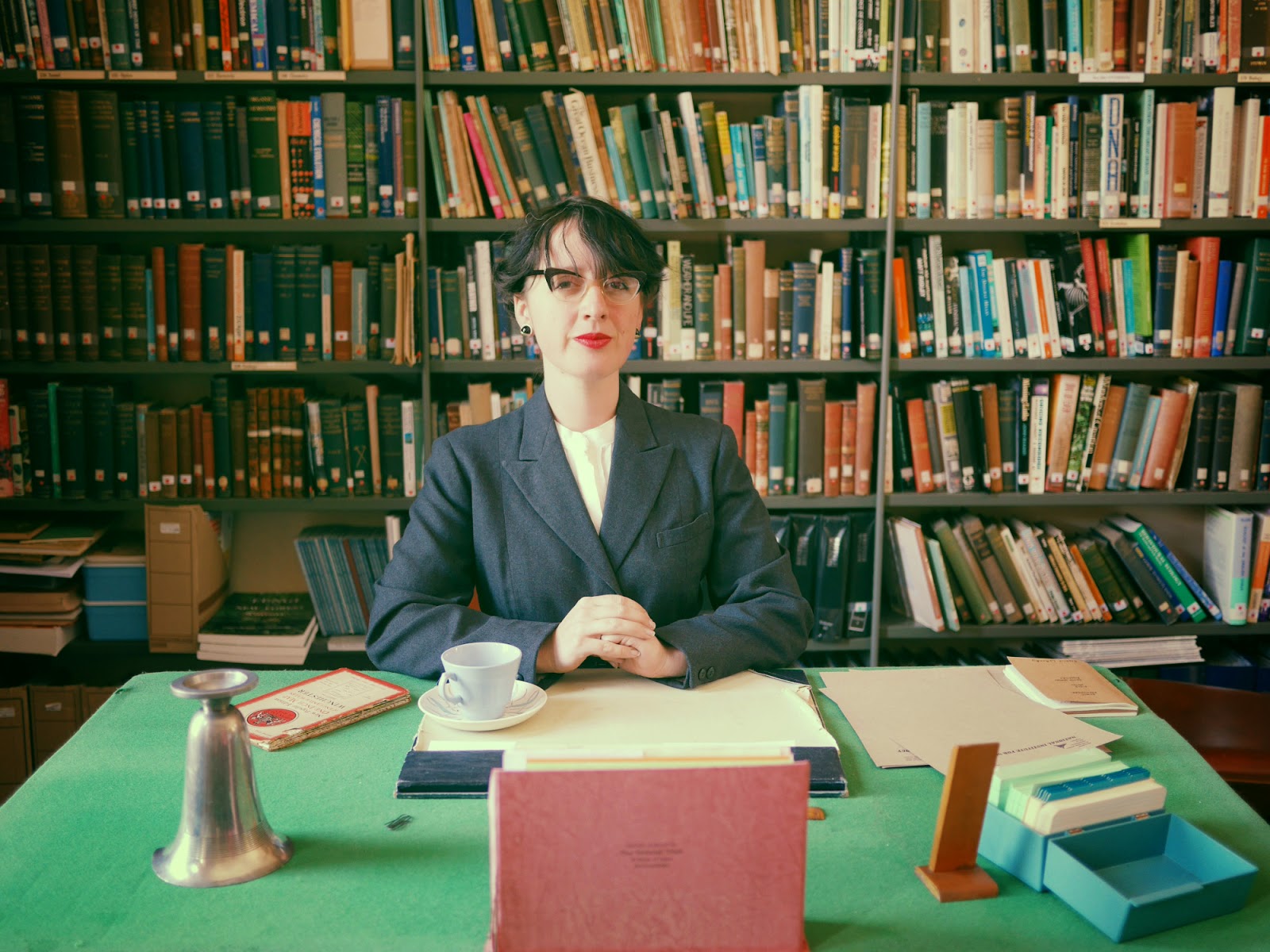
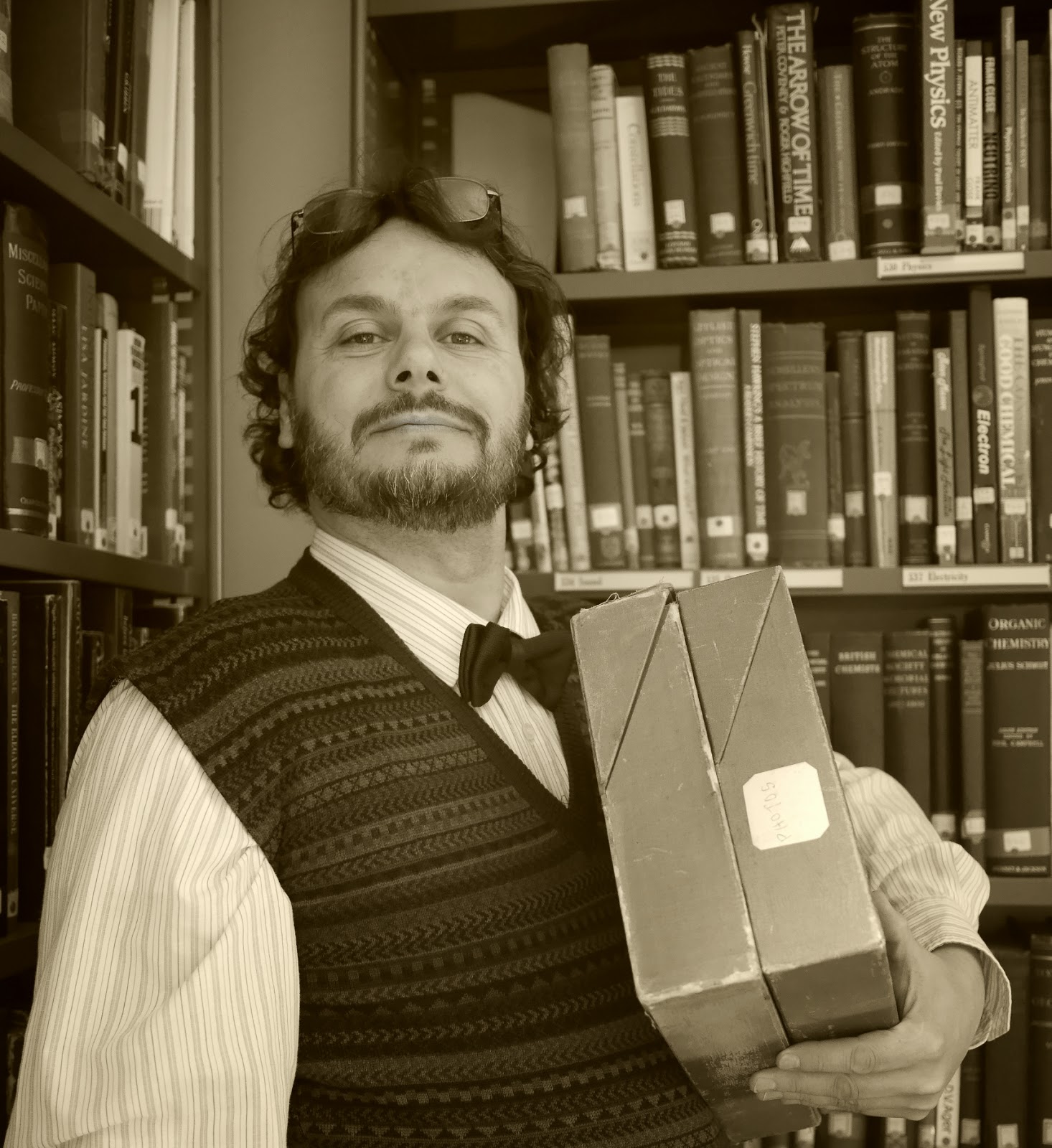
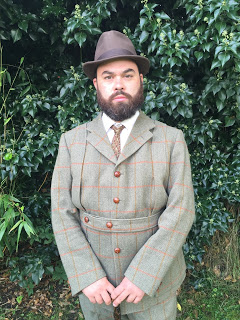 Percival Denny, BsC, NISG,
Percival Denny, BsC, NISG,
Born and raised in Norfolk, Percival 'Plum' Denny attended the same school as the regions' other distinguished son and early amateur subterranean sonic enthusiast, Lord Horatio Nelson. Somewhat of a dullard, Plum bungled his way through his time as a border until he
was granted a scholarship to Oxford thanks to his skills as a wicketkeeper. Deft behind the sticks, Plum soon gained a reputation as one of the finest cricketers on the university circuit. Fame beckoned, and Plum was sent on a MCC Exhibition Tour to the Far East, with the purpose of spreading the popularity of God's Chosen Game (locals still talk of his majestic 136 against a Presidents XI in Kuala Lumpur).
However, it was on this tour that events in Plum's life took a
mysterious turn. Taking a day trip into the Himalayan Mountains, Plum disappeared. He returned three years later. Although rumours abound of what happened during his time in exile, very few facts have come to light. What we do know is:
1) Evidence suggests that Plum was almost certainly completely silent for these three years
2) During that time he developed an incredible ability to listen to the smallest of sounds from the longest of distances
3) There is some talk of the influences of a shadowy Far Eastern Organisation dedicated to practicing the ancient art of subterranean listening mythologies
4) Plum never played cricket again.
On his return to England Plum switched courses at Oxford and transferred to study Physics, writing a seminal paper on "Ancient Eastern Philosophy and it's Influence on Transverse Waves". Whilst
many consider Plum to have 'gone native', his work attracted the
attention of Dr Stella Barrows and he was asked to join the NISG, a
position he still holds.
Plum is a passionate campanologist and owner of a Heavy Goods Vehicle (HGV) driving licence.
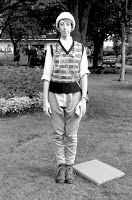 Mavis Collingwood BsC, NISG
Mavis Collingwood BsC, NISG
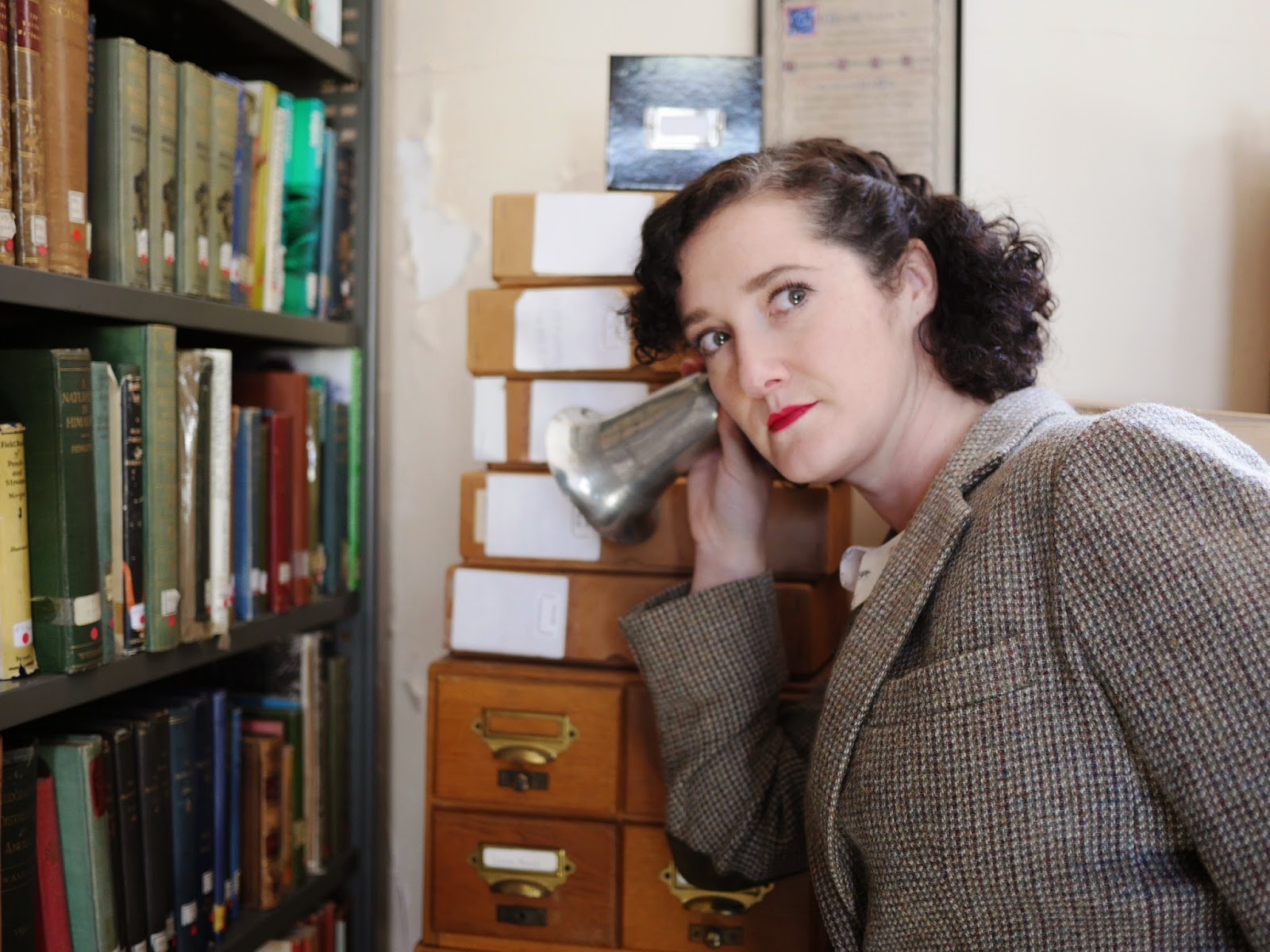
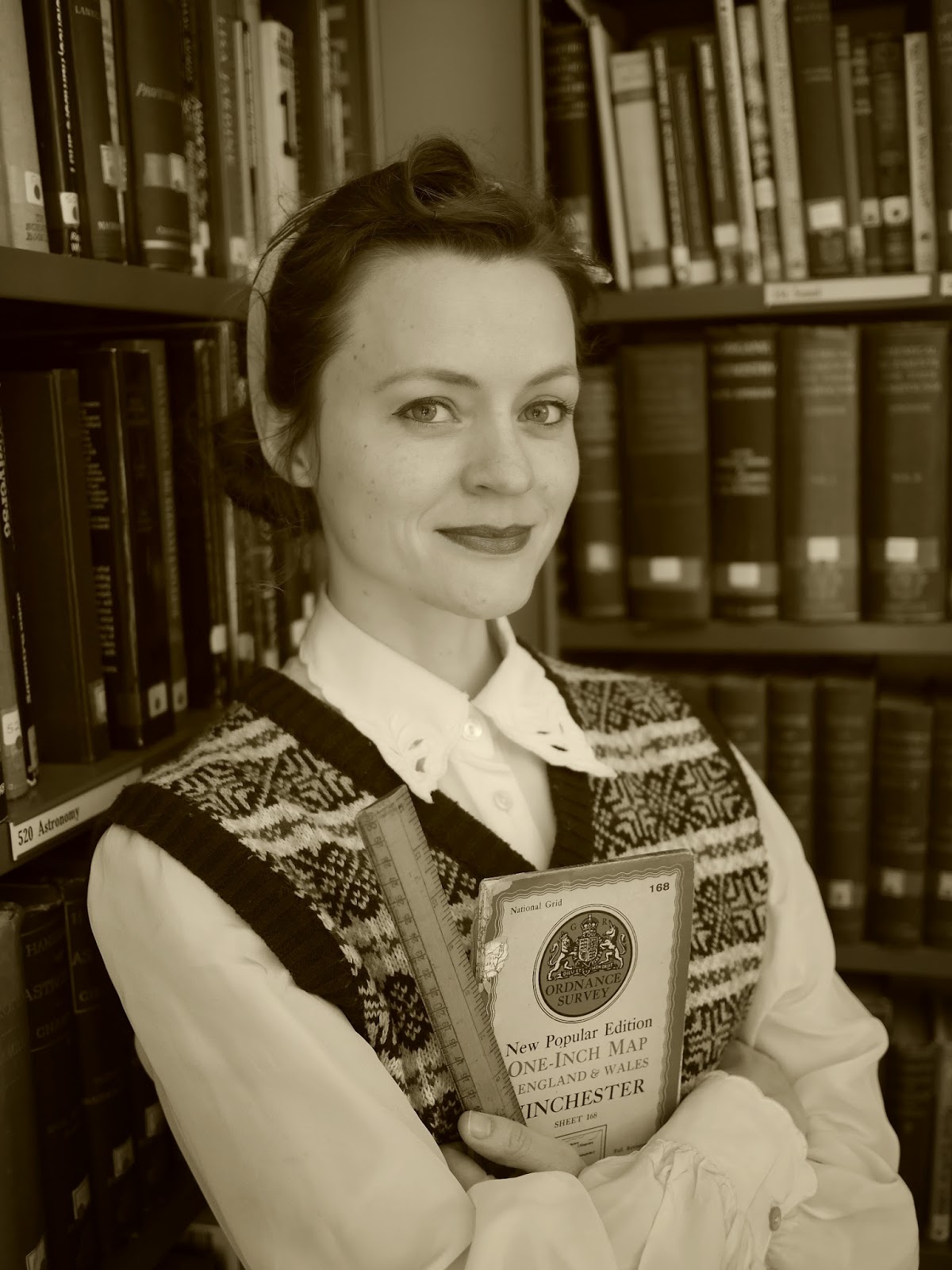
- Welcome
NATIONAL INSTITUTE FOR SONIC GEOLOGY Mission statement: ‘Audiendo ad terram’: Listening to the Earth The Institute exits for the purpose of exploring, recording and interpreting geological sonic phenomena in the British Isles and sovereign...
- Sounding Space, Bournemouth Pleasure Gardens #015
SITE NOTESCompiled by Roger Millington and Dr Stella BarrowsThe Bournemouth Pleasure Gardens (Lower Gardens) Sounding Space is situated towards the end of the Bourne Chine in an area initially settled by Captain Tregonwell in the early 1800s. Bournemouth...
- Chelmsford Sounding Space
SOUNDING SPACE 014: Bell Meadow, Chelmsford Overview Report, by Roger Millington. Photography by Miss Jenny Scott ‘Glaciers, Pebbles and Radio Waves’:Early data from the newly-discovered sounding space...
- Queen’s Park, Brighton: Subterranean Sonic Impact Assessment (subsass) #011
Recording the sonic impact of the deepest hand-dug well in the world!The Sounding Space at Queen’s Park offers NISG a unique opportunity to investigate how subterranean human activity can cause the percolation of sound into the Earth. At the same time,...
- A Guide To Citizen Scientist Induction Procedures And Instructions For The Use Of Nisg Detection Equipment (the Ear Trumpet):
BY: ROGER MILLINGTON PREAMBLE Sonic Geology is an emerging science. Despite the importance of our work to humankind’s understanding of the Natural World, we still face unjustified scepticism and even physical threats in some quarters, from rival...
Biography
BIOGRAPHIES
National Institute of Sonic Geology

Dr Stella Barrows, (BsC, PhD, NISG)
Born in Dorset and educated at the Sherborne School for Girls, Stella Barrows first became interested in notions of subterranean resonance when, as a girl, she met the pre-eminent Archeologist, Sir Mortimer Wheeler who was then head of the Institute of Archeology. Sir Mortimer was conducting his (now famous) excavations of the Iron Age Hill Fort of Maiden Castle and nearby tumuli sited on the South Dorset Ridgeway. Upon meeting her, Sir Mortimer invited Stella to assist on the dig. Although this was during the heady time of National ‘Hill Fort Mania’ Stella’s attention drifted, and she started to become enthralled by the older Bronze Age Bincombe Bumps (sited near Weymouth, also on the South Dorset Ridgeway), a series of six burial mounds which local myth suggested emit music at midday if listened to carefully enough. Stella experienced the melodic phenomena herself, but swiftly dismissed notions of supernatural or folkloric explanation for these ‘singing barrows’ and started to theorise about how sound might have become trapped within the bedrock of the British Isles. Her conclusions around the specific geology of place being fundamental to these emissions led her away from her first love of Archeology into an interest in the formation of the earth itself.
Stella subsequently attended University College London and graduated with a first in Geological Science. Her postgraduate thesis written on ‘Sonic Resonance in Neolithic Topography’ was written under the inspirational tutelage of Dame Trinity Arthurson who has provided a constant source of encouragement.
During the war, Barrows found employment working on the development of Sound Navigation and Ranging (SONAR), focussing on the impact geological configurations and seismic events have on the density and resonance of underwater sounding. Post-war, her passion for sonic emissions reignited and she decided to dedicate herself fully to the nascent fields of Sonic Geology and Sonic Investigation. Stella quickly established the ground-breaking National Institute of Sonic Geology (NISG) of which she is founding member and President. Since its formation, the NISG has grown to include several enthusiastic field operatives and a permanent team who Stella affectionately refers to as ‘Sonic Investigators’, including Roger Millington, Beatrice Lathenby, Hildegard Brunel, Mavis Collingwood and Percival Denny.
Although most of Dr Barrows’ time is taken up with her passion for NISG she occasionally dabbles in landscape painting and learning the Piano Accordion in her home county of Dorset.
Roger Millington, NISG
(Extract from Sonic Geology: Pioneers of a radical new science? The Times Educational Supplement)
Roger Millington’s interest in geology began as a boy, when he read Journey to the Centre of the Earth by Jules Verne, and developed a passion for digging holes, much to the annoyance of the gardener at the Norfolk vicarage in which he grew up.
Millington left school at 14, with a solid devotion to mechanical tinkering and outdoor activities, but no qualifications to speak of. After an extensive hands-on practical training as a mining engineer in the South Wales Valleys, where he developed a love of colliery brass band music, he enlisted in the Corps of Royal Engineers as a Sapper. War soon intervened, and he found himself involved in the dangerous tasks of military tunnelling and the preparation of defensive earthworks. This involved long hours underground amid the mud and horror of war, digging beneath enemy lines and listening carefully to vibrations from below ground that might indicate an imminent attack.
It was during one such mission that Millington had his first experience of geological sonic phenomena. Deep below ground on a Spring day in France, he found himself listening to the unmistakable sounds of medieval plainsong and the playing of spoons, as they oscillated within a large crystalline boulder around which he and his team were attempting to tunnel. Dismissing the experience as evidence of his slow slide into post-traumatic stress, Roger at first denied the preposterous notion that sound could be held in the Earth’s geology. He gritted his teeth, and plunged further into the jaws of international conflict.
The war was not kind to Millington, and eventually he was invalided out of the Army with shellshock and neuralgia, a shadow of his former self. He was shipped to a convalescent home in a former boys’ preparatory school at Seale Hayne, near Newton Abbot, where his recuperation centred on the restoration of a mountain of abandoned orchestral instruments that he had found in a dusty basement. Recovery was a slow and hesitant process. Peace and quiet, and gentle listening to the sounds of nature and light classical music were the order of the day.
All this changed when Dr Stella Barrows, president of the newly-established National Institute for Sonic Geology, arrived at Seale Hayne to investigate sonic phenomena that had been stimulated by the excavation of an unexploded bomb from the German Beidecker raids on Exeter. Encountering Dr Barrows as she sought to manage an aural upsurge behind the stables with only a battered Henley Audiophone in the way of equipment, Millington learned that the geological sonic phenomena he had experienced in the tunnels of wartime France were in fact geological reality. His world was turned upside down. What he had thought of as madness - sound emerging from the fabric of the Earth itself - was actually scientific fact. Barrows explained to Millington that the phenomena he had experienced had arisen from a verifiable feature of geology that could be empirically proven, catalogued and recorded, if only an appropriate form of reliable detection technology could be developed.
Invigorated by his epiphany, Roger joined NISG as technical advisor. He quickly turned to his basement of musical horns for inspiration, as he wrestled to find a method of improving the detection of subterranean sonic phenomena. Three days of frenetic tinkering led to the creation of the Ear Trumpet, and the detection and recording of the Seale Hayne phenomena.

Born and raised in Norfolk, Percival 'Plum' Denny attended the same school as the regions' other distinguished son and early amateur subterranean sonic enthusiast, Lord Horatio Nelson. Somewhat of a dullard, Plum bungled his way through his time as a border until he
was granted a scholarship to Oxford thanks to his skills as a wicketkeeper. Deft behind the sticks, Plum soon gained a reputation as one of the finest cricketers on the university circuit. Fame beckoned, and Plum was sent on a MCC Exhibition Tour to the Far East, with the purpose of spreading the popularity of God's Chosen Game (locals still talk of his majestic 136 against a Presidents XI in Kuala Lumpur).
However, it was on this tour that events in Plum's life took a
mysterious turn. Taking a day trip into the Himalayan Mountains, Plum disappeared. He returned three years later. Although rumours abound of what happened during his time in exile, very few facts have come to light. What we do know is:
1) Evidence suggests that Plum was almost certainly completely silent for these three years
2) During that time he developed an incredible ability to listen to the smallest of sounds from the longest of distances
3) There is some talk of the influences of a shadowy Far Eastern Organisation dedicated to practicing the ancient art of subterranean listening mythologies
4) Plum never played cricket again.
On his return to England Plum switched courses at Oxford and transferred to study Physics, writing a seminal paper on "Ancient Eastern Philosophy and it's Influence on Transverse Waves". Whilst
many consider Plum to have 'gone native', his work attracted the
attention of Dr Stella Barrows and he was asked to join the NISG, a
position he still holds.
Plum is a passionate campanologist and owner of a Heavy Goods Vehicle (HGV) driving licence.
 Mavis Collingwood BsC, NISG
Mavis Collingwood BsC, NISGDaughter of Dr Arthur and Phyllis Collingwood, Mavis moved to Aberdeen as a child after her parents were transferred to Aberdeen Royal Infirmary to assist with the development of a research partnership with Aberdeen University.
Mavis developed a keen interest in fishing, and frequently spent her spare time at the banks of the River Dee. However, she soon learnt that her fascination was less with what she caught, and more with the unexplored environment with which it came from. Even as a young adult, Mavis had recurring dreams of exploring a world underwater, and subsequently became isolated as her fascination with unseen places took over her ability to socialise with others in the environments within which she spent her time.
It was her mother who encouraged Mavis to take a more formal and educated interest in marine biology in order to overcome her isolation and to enable her to share her fascination with others.
Mavis graduated from Aberdeen University with a degree in Marine Ecology, and went on to write the ground breaking paper Familiar Patterns for Community Structures: a Study of Eastern Coastal Areas in Scotland. During the war she assisted with the tracking of allied U-boat packs, helping to break and read German Naval Enigma codes. Although she became an eminent name in her field,Mavis soon became eager to learn more about other unseen environments. Her discovery of sonic geology happened purely by chance, after finding a copy of the Journal of Sonic Experimental Geology in the South Coast Centre for Snorkelling and Diving, which she later discovered belonged to Beatrice Lathenby.
It was at a conference on sonic phenomena that Mavis first met Dr Stella Barrows, becoming captivated by her talk on methods of investigating historical sonic substrata, which reignited Mavis’ childhood, dreamlike, fascination for occurrences in unseen environments.
Her enthusiasm and expertise have led to her becoming a core member of the NISG and she is thrilled to have been appointed on an upcoming exploration of sounding spaces across the British Isles.
Hildegarde Brunel (BsC, MsC, NISG)
Hildegarde grew up in Richmond Upon Thames not far from Marble Hill Park. Her parents were
eminent Egyptologists and the young Hildegarde would often go with them on their archaeological
digs. Hildegarde first became interested in audiology science when her Mother was pregnant with her younger brother Bertie and she would use a pinard horn to listen to her unborn brother's heartbeat.
The Pinard Horn is still Hildegarde's preferred listening device and she recently published a short
paper on its use in mathematically mapping sonic porosity on the glacier's in southern Iceland.
Hildegarde briefly flirted with the notion of becoming an aviator before taking up a place at
Cambridge to read mathematical science. Whilst at Cambridge she set up the (now disbanded)
SLS (Secret Listening Society) – a group dedicated to the exploration of the aural architecture of
the environment. After graduation Hildegarde was recruited to take up a post for His Majesty's
Government.
Hildegarde became interested in sonic geology and the work of the NISG after reading of the ground-breaking discoveries of Dr Stella Barrows and shortly after Roger Millington was invited to
deliver a lecture at the SLS in the development of ear trumpet technology. After leaving the secret
civil service, Hildegarde was delighted to have been invited to work with the NISG. She joined the team for the first time last summer at the Little Bredy Sounding Space.
A keen diver and a passionate baker, Hildegarde's speciality is lemon drizzle cake.
Beatrice Lathenby BsC, NISG
Beatrice is the only child of Dr Harold and Margaret Lathenby, renowned archaeologists. She was brought up in London in a house overlooking Regent's Park. Whilst playing in the garden as a child
Beatrice heard conversational phenomena coming from the ground. When she told her parents they
worried for her sanity and sent her to eminent child psychologist Dr Heideberger, but finding nothing wrong with her the incident was soon forgotten, by her parents.
Beatrice gained a Bachelors degree in Geography from St Hilda's, Oxford University. She was employed as an air raid warden in her time there and was praised for her cool head and practicality. Beatrice was also in the ladies cycling and swimming club.
Whilst on a Geography field trip to North Yorkshire, Beatrice happened across Roger Millington at the Brimham Rocks Sounding Space, and was intrigued to hear about the work of the NISG relating it back to her childhood experience. She questioned her professors about NISG and sonic phenomena but was told that they were not a respectable scientific organisation, some even dismissed them as a bunch of fanatics, but undeterred Beatrice started carrying around a stethoscope borrowed from a friend studying medicine. She found a subterranean hum with what sounded like choral voices on the lawn of Queen's College and immediately sent for the NISG. Roger Millington arrived with his investigative equipment but was refused entry by the college. Roger told her about a new sounding space that they were investigating that summer on the South Coast and the need for strong swimmers to join the snorkelling team. Beatrice immediately volunteered and after graduating a few weeks later she joined the NISG down at Burton Bradstock.
Beatrice 'Flippers' Lathenby has been with NISG for two and half years and visited 8 sounding Spaces
with them. She has published three papers: The Common Emission of Melodic Events in Alluvial
Valleys, The Suspected methods of Seeding on the Southern Shore and Imprinting of Bass Frequency Sound Associated with the Movement of Glaciers all published in The Journal of Sonic Experimental
Geogolgy. She is Captain of the snorkelling team and has produced a pamphlet entitled Snorkelling tips for Sonic Investigators.
- Welcome
NATIONAL INSTITUTE FOR SONIC GEOLOGY Mission statement: ‘Audiendo ad terram’: Listening to the Earth The Institute exits for the purpose of exploring, recording and interpreting geological sonic phenomena in the British Isles and sovereign...
- Sounding Space, Bournemouth Pleasure Gardens #015
SITE NOTESCompiled by Roger Millington and Dr Stella BarrowsThe Bournemouth Pleasure Gardens (Lower Gardens) Sounding Space is situated towards the end of the Bourne Chine in an area initially settled by Captain Tregonwell in the early 1800s. Bournemouth...
- Chelmsford Sounding Space
SOUNDING SPACE 014: Bell Meadow, Chelmsford Overview Report, by Roger Millington. Photography by Miss Jenny Scott ‘Glaciers, Pebbles and Radio Waves’:Early data from the newly-discovered sounding space...
- Queen’s Park, Brighton: Subterranean Sonic Impact Assessment (subsass) #011
Recording the sonic impact of the deepest hand-dug well in the world!The Sounding Space at Queen’s Park offers NISG a unique opportunity to investigate how subterranean human activity can cause the percolation of sound into the Earth. At the same time,...
- A Guide To Citizen Scientist Induction Procedures And Instructions For The Use Of Nisg Detection Equipment (the Ear Trumpet):
BY: ROGER MILLINGTON PREAMBLE Sonic Geology is an emerging science. Despite the importance of our work to humankind’s understanding of the Natural World, we still face unjustified scepticism and even physical threats in some quarters, from rival...
